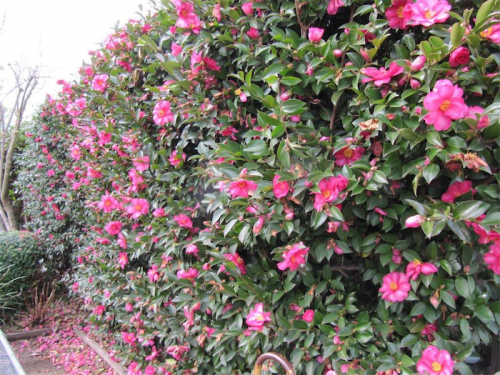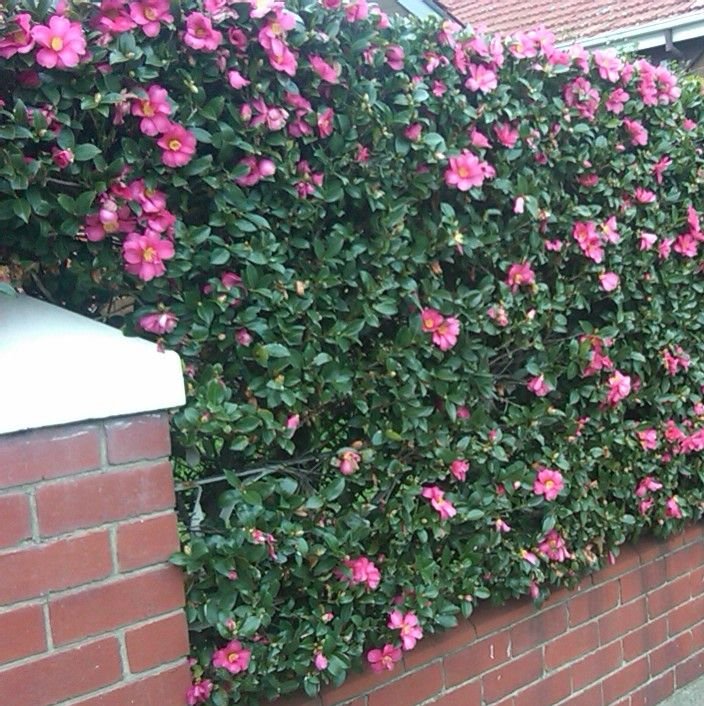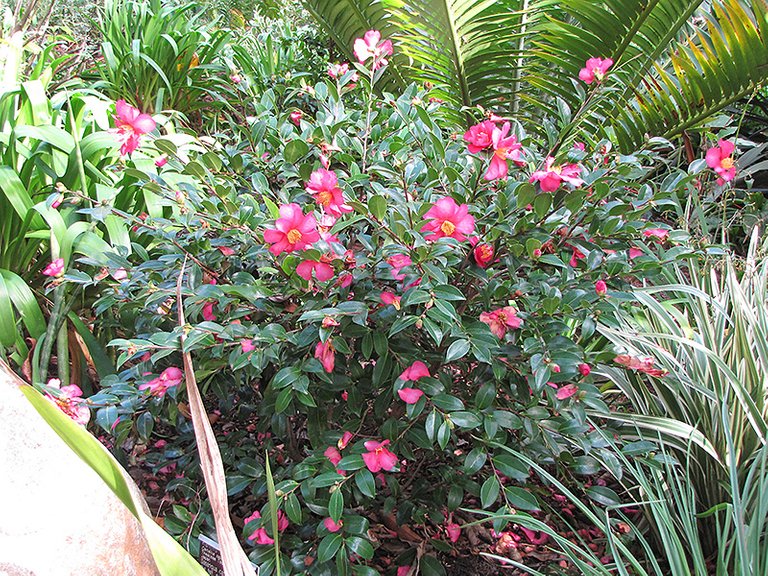Gardening / Time to make the most of camellias

AUTUMN is the time for planting camellias.
When we had our Yass nursery, one customer expressed surprise we didn’t have a particular variety in stock. I politely explained that it was not possible to carry all varieties because, as the Camellia Society will verify, there are more than 38,000 named cultivars registered worldwide.

So, where to start in selecting from the plant’s huge range of colours and varieties?
Author Peter Valder, in his book “The Garden Plants of China”, says while many species of camellia occur in China, very few were brought into cultivation until recently.
There are exceptions such as Camellia sinensis, the tea camellia that has long been grown for its leaves.
In China, surprisingly, only a handful of indigenous species have been used as ornamental plants. Today we are all familiar with C. japonica, C. sasanqua, C. reticulata and C. williamsii.

C. japonica, with its large, glossy leaves and huge flowers, blooms in spring and needs filtered shade.
C.sasanqua is one of the hardiest, even in our summer sun. Unlike most camellias, this one is scented. As illustrated here in our garden, C. sasanqua “Hiryu” makes an ideal hedge for screening, in this case it’s more than two metres tall. The added advantage is that it flowers in winter, which is important as it provides food for birds, especially honeyeaters, when most other plants, including native plants are dormant. Valder says that while cultivars of this type have been introduced into Western gardens, it’s rare to see this variety in Chinese gardens.
He describes the flowers of C. reticulata as having the “sumptuousness and mystique of tree peonies and our debt to generations of Yunnanese gardeners who long ago developed these wonderful plants,” adding that “this variety of camellia has been recorded from the 11th century. From that time these Yunnan camellias were praised by poets for their longevity and the beauty of their flowers”.

At the Yufeng Lamasery, in Tibet, there is an example of this camellia’s longevity, reputed to be more than 500 years old and bearing at least 4000 flowers. It is said that during the Chinese Cultural Revolution, 50 years ago, a monk risked his life by keeping it secretly watered. Modern breeders have produced some wonderful C. reticulata including “Dr. Clifford Parkes”, an informal double with rich red flowers; “William Hertrich”, a large semi-double with light red blossoms and “Valley Knudsen”, a compact, show-stopping, semi-double with luminous pink blossoms.
The Helleborus “Anna’s Red”... the leaves are growing at five centimetres a day!
link to